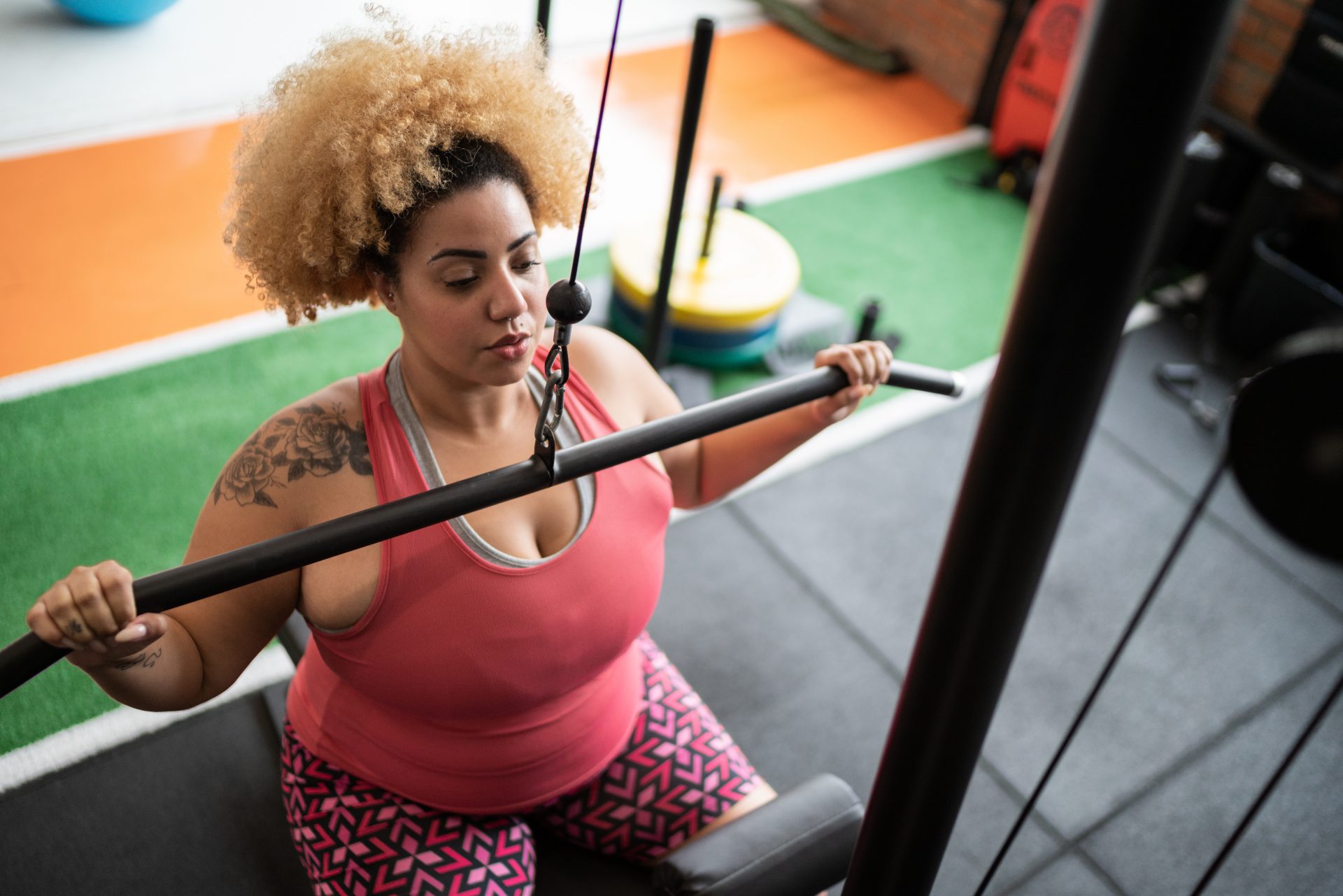The how, when and why to lifting heavier weights in the gym.
So, you want to get stronger and build muscle?The best way to do that is to lift heavier weights, but let’s be honest: increasing the number on the dumbbell or the plates on the bar can be hard.
Even if you’ve been deadlifting the same weight for a while, adding an extra 5kg might mean that you’re unable to lift it off the ground. Perhaps you’re ready to graduate from kettlebells to barbells but aren’t really sure what weight you should choose. While it may feel easier to stick with the weight you’re lifting, there are ways to challenge yourself by lifting safely and efficiently.
You may also like
What weight should I be lifting? Fitness trainers explain how to know what weight to pick in the gym
Why should you lift heavier?
If you feel confident with the weight you’re lifting, why would you change it? Aside from the fact that your workouts are a time when you should be challenging your body, “people should increase the weights they’re lifting to bring on progression and adaptations to the body,” explains Martena David, personal trainer at Gymbox. This is all about the concept of progressive overload, which means gradually increasing the demand on your body so your body keeps adapting.
“Applying progressive overload to your training routine ensures you are gaining muscle, getting stronger and continuously challenging your body,” adds David. With that comes all of the health benefits of building muscle, while also keeping your workouts motivating thanks to new accomplishments.

How to know when you’re ready to increase the weight you’re lifting
Before adding more weight you first need to make sure you’ve gone as far as you can with the weight that you’re currently using. “Ensuring your movement in your lifts is correct and with good form should always be done before adding more weight,” says David. She suggests asking yourself these three questions:
- Do you feel the muscle groups you are trying to target in the exercise activating?
- Is it pain free with no aggravation of other parts of your body when lifting?
- Has your current routine and weight started to feel easy? Ie are you are able to complete your desired number of reps without it feeling too taxing?
If the answer to any of these is ‘yes’ then your body is probably ready for a new challenge.
How to progress to heavier weights
Start small
Don’t make huge leaps with the weight your adding, advises David. “Depending on the exercise and lift you can start by adding 1.25kg or 2.5kg to the bar. It may sound small, but it’s still progress. Adding a little weight at a time ensures you are still being challenged and bringing on adaptations while moving correctly.”
Try new techniques
Adding in training protocols such as pyramid sets will help the body get used to lifting more weight without demanding four sets at your max weight. You can also try reducing your rep range; if you’re used to doing hypertrophy training (eight to 12 reps), try upping the weight and working in a strength phase, where you perform one to five reps.
Go heavy for you
“Know that we all start somewhere, and weight is all relative. What is light or heavy for you will be different for someone else,” David reminds us. The most important thing to concentrate on is feeling comfortable performing fundamental movement patterns before adding more weight. “Don’t rush the process, it takes time!”
Want to starting lifting? Sign up to the Strong Women Training Club to access strength training programmes for all levels.
Images: Getty
Source: Read Full Article
